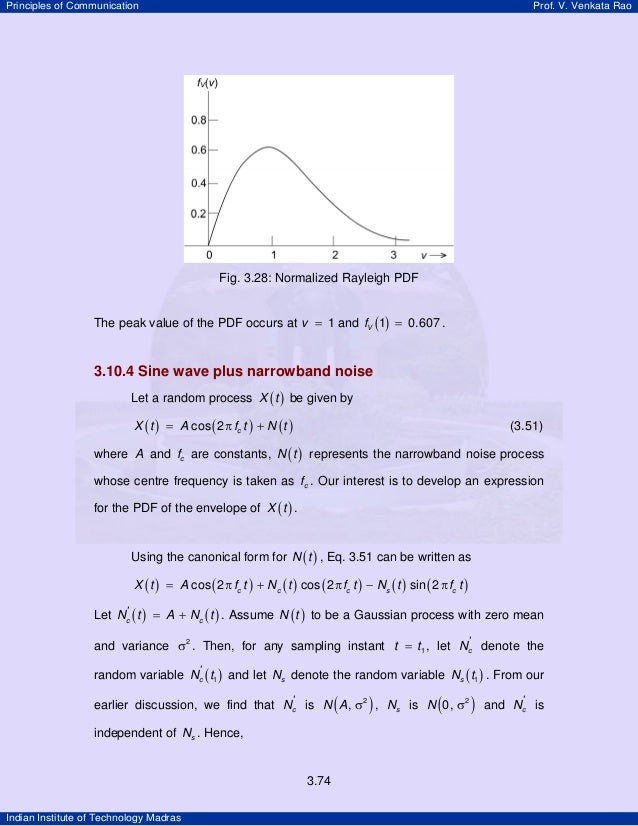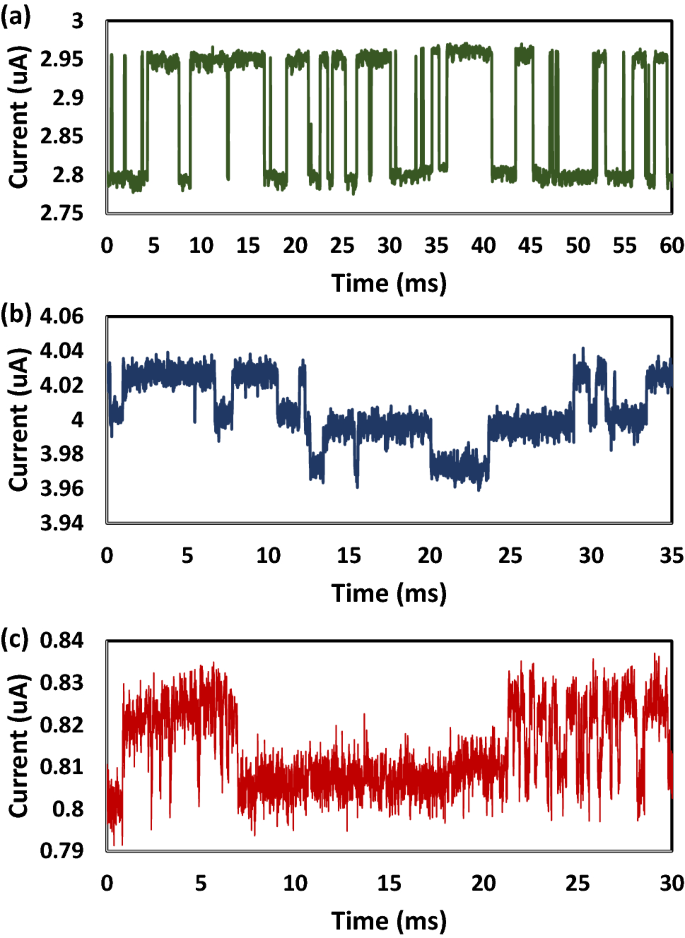The thermal noise of a resistor is an example of a random process in which the value of a variable at any given time is unpredictable, and it is only one of many random processes that generate noise in electronic circuits. We will see that such processes can be described in terms of their statistical measures—that is, in terms of certain averages—and that despite its random nature, we will be able to. Noise Vs random blyk. February 2014 edited February 2014 in How To. Hi, I want to discuss on the implementation and application of noise & random. Random process and noise. Aug 1, 2020. 1h 25m. In this class we will discuss probability density function and its properties.we. 4-)X(t)= S(t)N(t) random process and S(t)= aCos( wt+) identified with.Where are a and wo constant, N(t) loose stationary noise process and EN (t) +0, N (t) 1 0, 8 0, +2n between while uniformly distrubuted.
- Random Process And Noise Cancelling
- Random Process And Noise Pollution
- White Noise Process
- Random Noise Maker
10.2.5 Solved Problems
Problem
Consider a WSS random process $X(t)$ with begin{align} nonumber R_X(tau) =left{ begin{array}{l l} 1-|tau| & quad -1 leq tau leq 1 & quad 0 & quad text{otherwise} end{array} right. end{align} Find the PSD of $X(t)$, and $E[X(t)^2]$.
- Solution
- First, we have begin{align*} E[X(t)^2] &=R_X(0)=1. end{align*} We can write triangular function, $R_X(tau)=Lambda(tau)$, as begin{equation*} R_X(tau)=Pi(tau) ast Pi(tau), end{equation*} where begin{align} nonumber Pi(tau) =left{ begin{array}{l l} 1 & quad -frac{1}{2} leq tau leq frac{1}{2} & quad 0 & quad text{otherwise} end{array} right. end{align} Thus, we conclude begin{align*} S_X(f) &=mathcal{F} {R_X(tau)} &=mathcal{F} {Pi(tau) ast Pi(tau)} &=mathcal{F} {Pi(tau)} cdot mathcal{F} {Pi(tau)} &=big[textrm{sinc} (f)big]^2. end{align*}
Problem
Let $X(t)$ be a random process with mean function $mu_X(t)$ and autocorrelation function $R_X(s,t)$ ($X(t)$ is not necessarily a WSS process). Let $Y(t)$ be given by begin{align*} Y(t)&=h(t)ast X(t), end{align*} where $h(t)$ is the impulse response of the system. Show that
Random Process And Noise Cancelling
- $mu_Y(t)=mu_X(t) ast h(t)$.
- $R_{XY}(t_1,t_2)=h(t_2) ast R_X(t_1,t_2)=int_{-infty}^{infty} h(alpha) R_X(t_1,t_2-alpha) ; dalpha$.
- Solution
- We have begin{align*} mu_Y(t)=E[Y(t)]&=Eleft[int_{-infty}^{infty} h(alpha)X(t-alpha) ; dalpharight] &=int_{-infty}^{infty} h(alpha)E[X(t-alpha)] ; dalpha &=int_{-infty}^{infty} h(alpha) mu_X(t-alpha) ; dalpha &=mu_X(t) ast h(t). end{align*}
- We have begin{align*} R_{XY}(t_1,t_2)=E[X(t_1)Y(t_2)]&=Eleft[X(t_1) int_{-infty}^{infty} h(alpha)X(t_2-alpha) ; dalpharight] &=Eleft[ int_{-infty}^{infty} h(alpha)X(t_1)X(t_2-alpha) ; dalpharight] &=int_{-infty}^{infty} h(alpha)E[X(t_1)X(t_2-alpha)] ; dalpha &=int_{-infty}^{infty} h(alpha) R_X(t_1,t_2-alpha) ; dalpha. end{align*}

Problem
Prove the third part of Theorem 10.2: Let $X(t)$ be a WSS random process and $Y(t)$ be given by begin{align*} Y(t)&=h(t)ast X(t), end{align*} where $h(t)$ is the impulse response of the system. Show that begin{align*} R_{Y}(s,t)=R_Y(s-t)&=int_{-infty}^{infty} int_{-infty}^{infty} h(alpha) h(beta) R_X(s-t-alpha+beta) ; dalpha dbeta. end{align*} Also, show that we can rewrite the above integral as $R_{Y}(tau)=h(tau) ast h(-tau) ast R_X(tau)$.
- Solution
- begin{align*} R_{Y}(s,t)&=E[X(s)Y(t)] &=Eleft[ int_{-infty}^{infty} h(alpha)X(s-alpha) ; dalpha int_{-infty}^{infty} h(beta)X(s-beta) ; dbetaright] &= int_{-infty}^{infty} int_{-infty}^{infty} h(alpha) h(beta) E[X(s-alpha)X(t-beta)] ; dalpha ; dbeta &= int_{-infty}^{infty} int_{-infty}^{infty} h(alpha) h(beta) R_X(s-t-alpha+beta) ; dalpha ; dbeta. end{align*} We now compute $h(tau) ast h(-tau) ast R_X(tau)$. First, let $g(tau)=h(tau) ast h(-tau)$. Note that begin{align*} g(tau)&=h(tau) ast h(-tau) &= int_{-infty}^{infty} h(alpha)h(alpha-tau) ; dalpha. end{align*} Thus, we have begin{align*} g(tau) ast R_X(tau)&= int_{-infty}^{infty} g(theta) R_X(theta-tau) ; dtheta &=int_{-infty}^{infty} left[int_{-infty}^{infty} h(alpha)h(alpha-theta) ; dalpha right] R_X(theta-tau) ; dtheta &=int_{-infty}^{infty} int_{-infty}^{infty} h(alpha)h(alpha-theta) R_X(theta-tau) ; dalpha ; dtheta &=int_{-infty}^{infty} int_{-infty}^{infty} h(alpha)h(beta) R_X(alpha-beta-tau) ; dalpha ; dbeta &=int_{-infty}^{infty} int_{-infty}^{infty} h(alpha)h(beta) R_X(tau-alpha+beta) ; dalpha ; dbeta &big(textrm{since } R_X(-tau)=R_X(tau)big). end{align*}

Problem
Let $X(t)$ be a WSS random process. Assuming that $S_X(f)$ is continuous at $f_1$, show that $S_X(f_1) geq 0$.
- Solution
- Let $f_1 in mathbb{R}$. Suppose that $X(t)$ goes through an LTI system with the following transfer function begin{align*} H(f)=left{ begin{array}{l l} 1 & quad f_1 lt |f| lt f_1+Delta & quad 0 & quad text{otherwise} end{array} right. end{align*} where $Delta$ is chosen to be very small. The PSD of $Y(t)$ is given by begin{align*} S_Y(f)=S_X(f)|H(f)|^2=left{ begin{array}{l l} S_X(f) & quad f_1 lt |f| lt f_1+Delta & quad 0 & quad text{otherwise} end{array} right. end{align*} Thus, the power in $Y(t)$ is begin{align*} E[Y(t)^2] & =int_{-infty}^{infty} S_Y(f) ; df &=2int_{f_1}^{f_1+Delta} S_X(f) ; df &approx 2 Delta S_X(f_1). end{align*} Since $E[Y(t)^2] geq 0$, we conclude that $S_X(f_1) geq 0$.
 Problem
Problem Let $X(t)$ be a white Gaussian noise with $S_X(f)=frac{N_0}{2}$. Assume that $X(t)$ is input to an LTI system with begin{align*} h(t)=e^{-t}u(t). end{align*} Let $Y(t)$ be the output.
Random Process And Noise Pollution
- Find $S_Y(f)$.
- Find $R_Y(tau)$.
- Find $E[Y(t)^2]$.
White Noise Process
- Solution
- First, note that begin{align*} H(f)&=mathcal{F} {h(t)} &=frac{1}{1+j2 pi f}. end{align*}
- To find $S_Y(f)$, we can write begin{align*} S_Y(f) &=S_X(f)|H(f)|^2 &=frac{N_0/2}{1+(2 pi f)^2}. end{align*}
- To find $R_Y(tau)$, we can write begin{align*} R_Y(tau)&=mathcal{F}^{-1}{S_Y(f)} &=frac{N_0}{4}e^{-|tau|}. end{align*}
- We have begin{align*} E[Y(t)^2]&=R_Y(0) &=frac{N_0}{4}. end{align*}
- First, note that begin{align*} H(f)&=mathcal{F} {h(t)} &=frac{1}{1+j2 pi f}. end{align*}
Random Noise Maker
